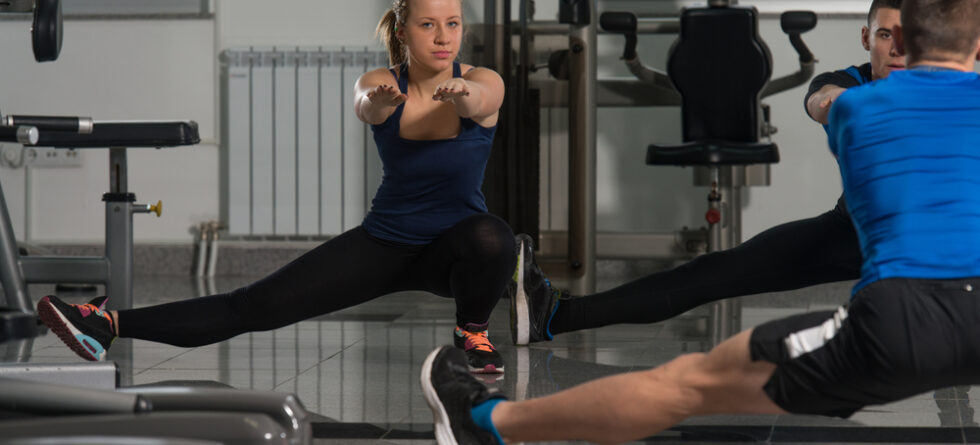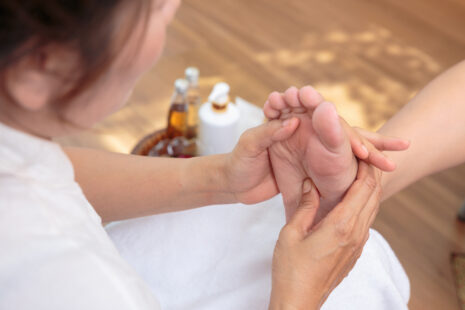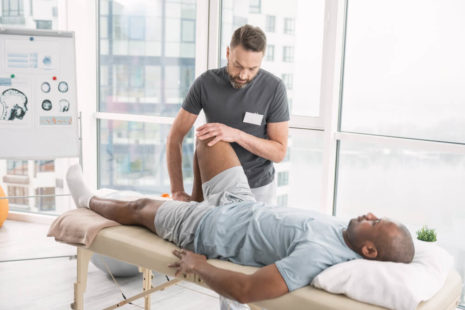A recovery gym session for soccer players is designed to promote muscle recovery, reduce fatigue, prevent injuries, and enhance overall performance after intense training sessions or matches.
Here’s an outline of what a typical recovery gym session for soccer players might include…
- Foam Rolling and Self-Myofascial Release (SMR)
- Begin the session with foam rolling or using massage tools to target tight muscles and release tension. Focus on areas commonly affected by soccer movements, such as the quadriceps, hamstrings, calves, glutes, and hip flexors.
- Spend 1-2 minutes rolling each muscle group, applying moderate pressure and focusing on areas of particular soreness or tightness.
- Mobility and Flexibility Exercises
- Perform dynamic stretching exercises to improve joint mobility and flexibility. Include movements that target the hips, hamstrings, groin, quadriceps, and ankles.
- Examples of dynamic stretches include leg swings, hip circles, walking lunges with a twist, and lateral leg swings.
- Low-Intensity Cardiovascular Exercise
- Engage in low-impact cardiovascular activities to promote blood flow and aid in recovery. Options may include cycling on a stationary bike, using an elliptical machine, or light jogging on a treadmill.
- Aim for 10-15 minutes of continuous activity at a moderate intensity to elevate heart rate and promote circulation without causing additional fatigue.
- Core Stability and Balance Training
- Perform exercises that target core stability and balance to improve proprioception and neuromuscular control. Strong core muscles contribute to overall athletic performance and help prevent injuries.
- Include exercises such as planks, side planks, Russian twists, bird dogs, and stability ball exercises.
- Light Strength Training
- Incorporate light resistance exercises to maintain muscular strength and promote recovery without causing excessive fatigue. Focus on high-repetition, low-intensity movements using bodyweight, resistance bands, or light dumbbells.
- Include exercises that target major muscle groups involved in soccer movements, such as squats, lunges, hip bridges, calf raises, and lateral leg raises.
- Cool Down and Stretching
- Finish the session with a brief cool down period to lower heart rate and promote relaxation. Perform static stretches targeting major muscle groups to improve flexibility and reduce muscle tension.
- Hold each stretch for 20-30 seconds, focusing on deep breathing and relaxation.
- Hydration and Nutrition
- Hydrate adequately throughout the session by drinking water or electrolyte-rich beverages to replace fluids lost during exercise.
- Consume a post-workout snack or meal containing a combination of carbohydrates and protein to support muscle recovery and replenish glycogen stores.
- Recovery Modalities
- Consider incorporating additional recovery modalities such as contrast baths, compression garments, or foam rolling to further enhance recovery and reduce muscle soreness.
It’s important to customize the recovery gym session based on individual fitness levels, training volume, and specific recovery needs. Soccer players should listen to their bodies and adjust the session as needed to ensure optimal recovery and readiness for subsequent training sessions or matches.




